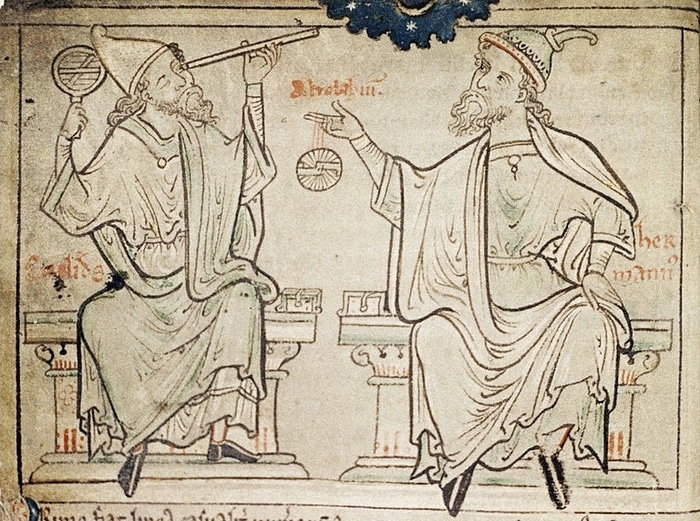The translator is a bridge between cultures. It’s a cliché but few represent this better than Herman Dalmatin.
Who among us translators can boast to be, in his or her spare time, an astronomer, an astrologer, a mathematician, a writer and a philosopher? Such was the case of Hernan. Herman, who had as many names as talents: Herman Dalmatin, aka Scalvus Dalmata, aka Herman of Carinthia… a sort of Prince of translators, whose story is the following.
Training Years: From Croatia to the Middle East via France
It all started on the peaceful shores of the small island of Istria, in the charming little town of Korčula. Or in Saint Peter im Holz, Carinthia, if you prefer. Anyway, it’s there (or there), that the little _________________ (insert the name of your choice) was born around 1100. While he was hesitating between the stability of a job as a lifeguard and a lucrative career as a water polo player, his father sent him to study in France. He studied grammar, rhetoric and dialectic under the direction of Thierry of Chartres, who knew Plato’s philosophy the way my cat knows a siesta; that is to say, an expert. This is where Herman met Robert of Ketton, the man who would become his BFF. Together they went backpacking to discover the Middle East. This spring break was their Arab spring: in four years the two friends travelled the Byzantine Empire, the Latin states of the East and Damascus. They ended up learning the language and thus became translators (all work is valuable work). But at that time the Eldorado for Arabic-Latin and Latin-Arabic translators was Spain.
First Work: The Spanish Reconquista
So they ate one last kebab and left for Spain. There in 1142, while spending the evening discussing Arabian astronomy in a tapas bar, they came across (most probably by chance ) Peter the Venerable, director of a translation agency, who told them something along the lines of: “Hey guys, I might have a job for you. I’m putting together a team for an urgent translation from Arabic to Latin. Do you work with Trados?” They ordered another round of pints and Peter introduced them to the rest of the team: Peter of Toledo, Peter of Poitiers and a Muslim named Muhammad. The result was the Corpus toledanum, which included, besides the Qur’an, Islamic texts such as Liber generationis Mahumet and Doctrina Mahumet. These translations would serve as a reference in that field at least until the Renaissance (they would be printed in 1543 in Basel).
Scientific Work: Back in France
After this little Erasmus in Spain, Herman returned to France. It was 1143 and he did what all eternal students end up doing: he became a teacher. However, he continued working as a translator, focusing on his other hobbies: astronomy, astrology and philosophy. While he translated Euclid’s Elements together with the Planisphaerium and the Canon by Ptolemy, he was best known for his translations of Arabian scientific writings: a total of twenty works, including a translation of Al-Khawarizmi’s Astronomical Tables and Albumasar’s General Introduction to Astronomy. He also worked with Robert and Hughes de Santalla on a project of translations from Arabic entitled Liber novem iudicum whose objective was to replace Latin astrology with Arabic astronomy.
The West is therefore greatly indebted to Herman not only for his work on the Corpus of Toledo and his contribution to the West’s understanding of Islam, but also for his work on scientific translations. Our Renaissance owes a lot to him as well, particularly the discovery of Arab scientists and, through them, of some Greek scholars.
Discover our translation agency.



